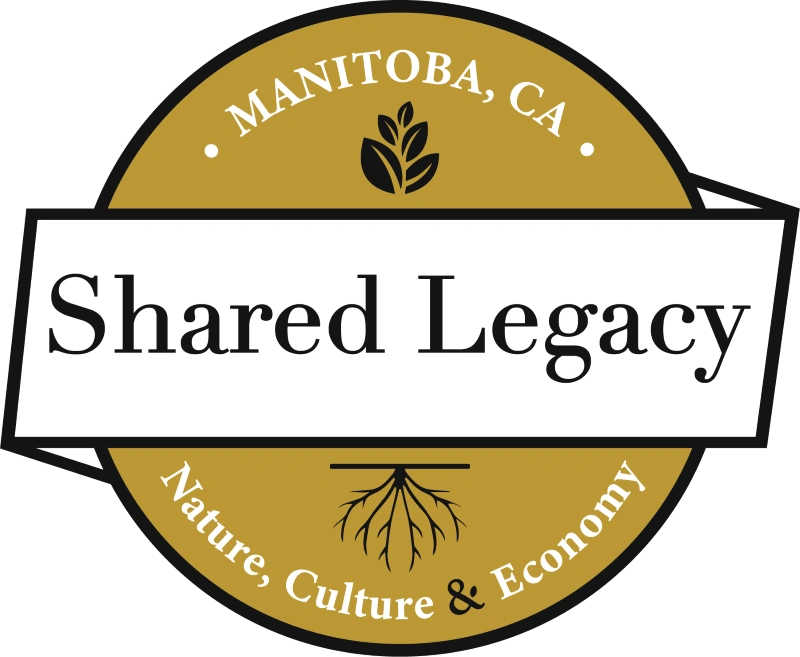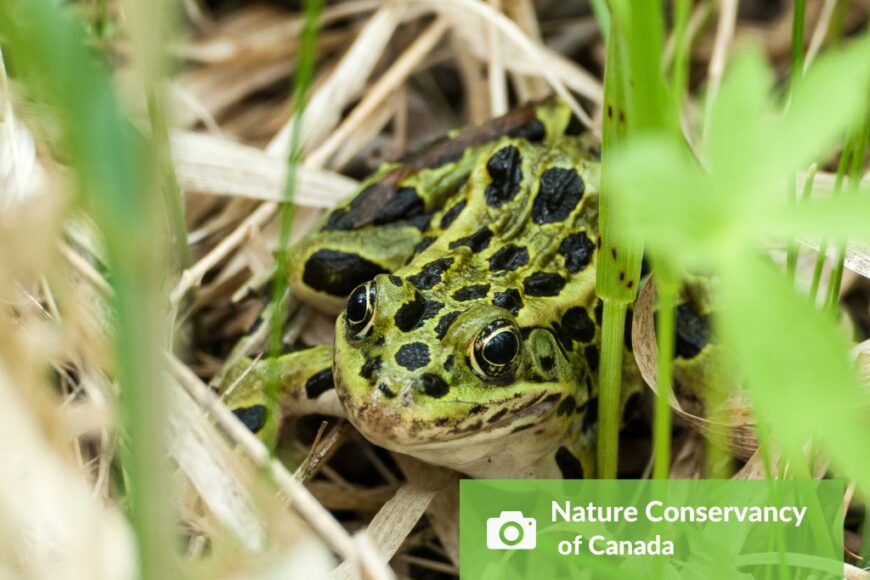Dawson Trail Dispatch, written by Norm Gregoire, October 2024
Page 14 https://issuu.com/dispatch222/docs/dawson_trail_dispatch_october_2024
The diversity of life in the tall-grass prairie is truly impressive! For folks who have visited the Manitoba Tall Grass Prairie Preserve over the summer months, this is easy to appreciate. A short walk on one of the interpretive trails can showcase dozens of species of beautiful wildflowers in bloom. As we move more into the autumn season and the last wildflowers begin to wither, we more readily observe other species that call the tall-grass prairie home. Over the last few weeks, I have noticed a fair number of northern leopard frogs on the move as they search for calories before the snow begins to fall. This species at risk, that is usually well known by visitors, is always a favourite when we see them hopping on the trail.
The northern leopard frog is green to brown in colour with dark spots throughout its upper body and has a light-coloured stomach. There are two prominent ridges that run along the upper body towards the eyes. The northern leopard frog is Manitoba’s largest frog and can be as large as a human fist!
As most would assume, the “leopard” name is derived from the frog’s spot pattern being similar in appearance to a leopard’s fur coat. It should also be noted that the leopard frog shares other qualities with leopards, such as being a successful predator. Leopard frogs are omnivores that will eat just about anything that will fit into their mouths, including small birds and snakes! When swallowing such large prey, the leopard frog will retract its eyes to help push the food down its throat.
To become a top predator of its weight class, the northern leopard frog depends on different habitats for the various stages of their life cycle. Breeding, laying eggs, and tadpole growth take place in healthy water sources such as marshes or other shallow wetlands. As adults, they spend their summers in fields and meadows, and their winters in well-oxygenated water sources, such as ponds or swamps, that are deep enough to not freeze completely to the bottom.
This reliance on various habitats throughout a leopard frog’s life means that it is more susceptible to a variety of habitat-specific threats. Pollution, road mortality, and pesticide use also have negative effects on northern leopard frogs.
Part of growing up in a nature-rich area like the tall-grass prairie includes a close relationship with all the critters that hop, slither, and crawl. I love taking youth out to experience this on walks in the preserve. Finding a northern leopard frog is always a highlight for any walk, and once we learn more about this species at risk, a respect and bond are formed. I hope this will be passed on when it is time for these future leaders to share.
Adventures with Nature Norm
All are welcome to join me as we enjoy the “Fall Colours of the Tall-grass Prairie” on the October edition of Adventures with Nature Norm! This free walk will be taking place on October 12th from 10 a.m. to 12 p.m. at the Prairie Shore Interpretive Trail in the Manitoba Tall Grass Prairie Preserve. For more information or to register, please contact info@sharedlegacymb.ca. See you there!

